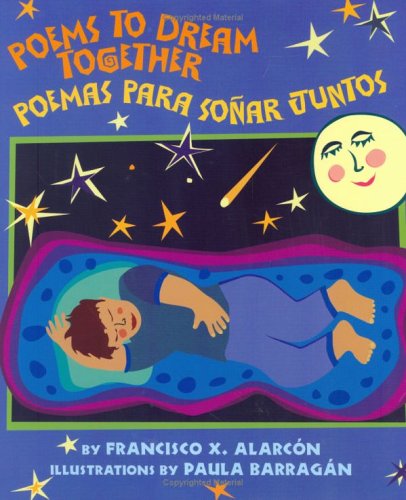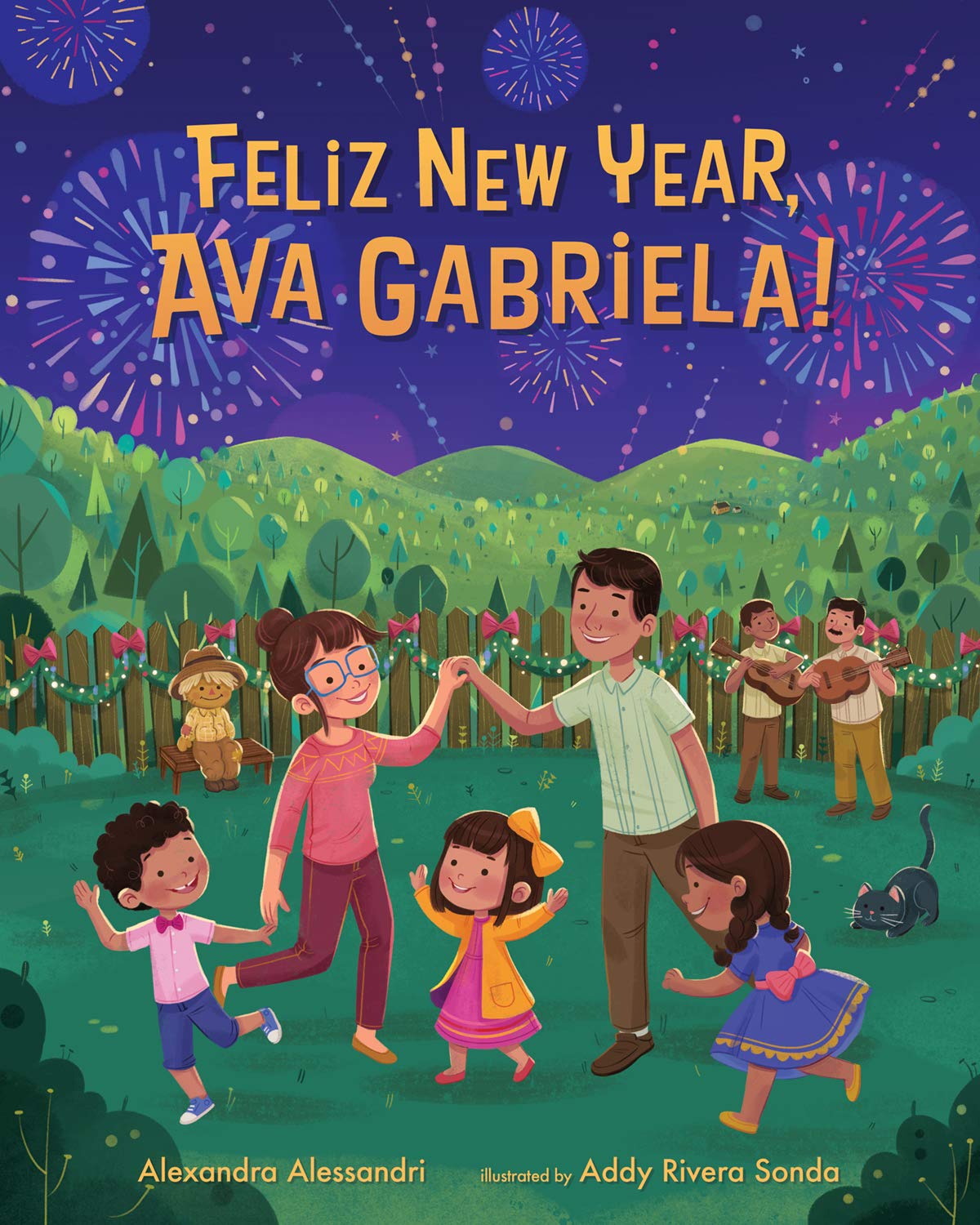As educators, we must strive to create classrooms in which the languages, practices, and resources of students and families are central to curriculum and our collective understandings of what it means to be a reader, writer, and storyteller.
Central to these classrooms must be the intentional selection of texts that affirm and are reflective of children’s language and cultural practices. This may include selecting texts that include translanguaging, meaning that multiple languages are represented in the story that reflect the everyday speech and communication practices of students and families.
These are practices we have reflected on through many different life experiences and we'd like to share some of our favorite books, lessons learned, and recommended resources in the following essay.
Our Stories
As Latinas, mothers, and educators, we can attest to the importance of seeing yourself, your family and comunidad (community) represented in the curriculum. From our own personal experiences, we did not attend schools where we were provided the opportunity to learn about the contributions of our ancestors, the richness of our cultures, or read literature written by authors who shared our experiences.
Our students deserve to see themselves represented in the school curriculum, not exclusively during one month, but as central to the history, music, art, science and literature that is important to our nation. They should not have to wait until college to learn about the beauty of who they are and the contributions of their ancestors. We continue by sharing our own stories about why we are deeply committed to this work.
Why Mirrors and Windows Matter: Dr. Flores' Story

"Poems to Dream Together/Poemas para soñar juntos" by Francisco Alarcón
Mirrors, windows and sliding glass doors provide an important framework for growing readers and writers who can envision their own stories as important to how we understand the world and what is possible for them and their communities (Bishop, 1990).
As a young Chicana growing up in Arizona, I was an avid reader and writer. When I first learned how to read, I remember enjoying the Just For You (Mayer, 1975) and Corduroy (Freeman, 1968). During my tween years, I devoured Sweet Valley Twins (Pascal) and the Babysitters Club Series (Martin), spending the summer reading a couple books each day.
These books defined my reading life and are part of my earliest memories of reading and learning how to read words. Shortly after entering high school, I turned away from reading, only reading the short stories and novels for literature circles and class assignments.
During my junior year of high school, I discovered Gary Soto and his book Jesse (1994). His writing and this story held up a mirror which brought me back to myself and to reading. It was the first time I remember reading a book that centered around the lives of Mexican-Americans and where I witnessed the dreams of generations and the love and faith of an entire family.
As a classroom teacher, I strived to ensure that my students had access to books that served as mirrors, windows and sliding glass doors. For example, in after-school Family Writing Workshops I organized for my multilingual students and their families, I selected mentor texts that served as mirrors to also inspire oral storytelling and writing of personal stories and histories.
Relating their own experiences to such picture books and poetry anthologies as In My Family/En mi familia (Garza, 2000), The Dream on Blanca’s Wall/El sueño pegado en la pared de Blanca (Medina, 2004) and Poems to Dream Together/Poemas para soñar juntos (Alarcón, 2005), my students, their parents and siblings shared and wrote stories from their own lives. Our stories served as mirrors and windows into our collective and unique experiences that cultivated a strong comunidad.
Why Mirrors and Windows Matter: Dr. Osorio's Story

"Felíz New Year, Ava Gabriela!" by Alexandra Alessandri
Mirrors and windows are extremely important to ELLs because when multilingual students do not see their linguistic and cultural resources reflected in the curriculum, they can feel like there is something wrong with them (Bishop, 1990).
I remember my own struggles of growing up in a predominantly white neighborhood. At home, I grew up speaking Spanish and having strong cultural connections to my Colombian heritage, but at school everything was in English and my cultural heritage was never recognized. This is where multicultural and linguistically diverse children’s books can support teachers in recognizing their diverse student population.
For example, I was very excited to recently come across the new book Felíz New Year, Ava Gabriela! by Alexandra Alessandri because it shares the experience of a little girl named Ava visiting family in Colombia. I was excited to share this book with my own children where they could reminisce on the experiences they shared with Ava. These included making buñuelos, creating el Señor Año Viejo to say goodbye to the past year and eating twelve grapes at the stroke of midnight to bring us good luck throughout the new year. The text also included language practices similar to my own (and my children’s) use of language.
The text provided a mirror for our language practices and presented them as "normal." Books as windows are texts where a child can learn about a view of the world they might not be familiar with. This can include a text that provides a window into a cultural or language background that is different from their own.
Books that I have shared that have served as both windows and mirrors include I Hate English! by Ellen Levine and In English, Of Course by Josphine Nobisso. While neither one of these children’s books include a Latinx character similar to those that I have previously taught, the texts spoke to the difficulty that a multilingual child can experience while learning English. This is something that anyone who has gone through that experience can connect to. It is important that children see mirrors and windows throughout the curriculum they are exposed to in the classroom.
Windows and Mirrors in the Classroom
As a classroom teacher, Dr. Osorio was required to use a basal reader in her developmental model bilingual second grade classroom with all native Spanish speakers. This basal reader was a direct translation of the English basal reader and therefore did not include any characters that were Latinx or deal with bilingualism or biculturalism. This is when Dr. Osorio decided to bring in Latinx children’s book into her classroom.
Some of the books she used were:
- Super Cilantro Girl/La superniña del cilantro by Juan Felipe Herrera
- Waiting for Papá/Esperando a Papá by René Colato Laínez
- From North to South/Del norte al sur by René Colato Laínez
- Prietita and the Ghost Woman/Prietita y la llorona by Gloria Anzaldúa
Many of the books Dr. Osorio first found when introducing Latinx children’s literature to her classroom all included a similar storyline. They were all about being an immigrant and revolved around the U.S.-Mexico border. Using these texts, she soon learned a lot more about her students. She heard stories about their lived experiences and that of their families that she had never heard before. She was also able to share some of her own personal family stories through the practice of vulnerability.
Dr. Osorio wanted to make sure to move beyond the "single story," so she looked for books in Spanish that portrayed the immigration story beyond the U.S.- Mexico border. She was able to find Mariama Same But Different/Mariama Diferente Pero Igual by Jerónimo Cornelles.
There are now even more picture books related to the topic of immigration or being an immigrant which include:
- Carmela Full of Wishes/Los Deseos de Carmela by Matt de la Peña
- Where are you from?/¿De Donde Eres? By Yamile Saied Méndez
- Tía Isa Wants a Car by Meg Medina
In addition, other topics such as civil rights for Latinx students are highlighted in books like Separate Is Never Equal: Sylvia Mendez and Her Family's Fight for Desegregation by Duncan Tonatiuh.
Why is it so important to move beyond the single story? Providing these various children's books to Dr. Osorio's students opened up a space to have conversations that she and her students had never had before. Of course, some students could connect to the characters and the story more than others, but having these texts as mirrors and windows acknowledged and valued the experiences of many of Dr. Osorio's students in ways that had never been done before in the classroom.
In addition, it was important to not just stay there on the topic of immigration but recognize the multiple identities that students have. That's why another topic Dr. Osorio explored with her students was that of language use. She used texts to not only talk about language choices, but also have texts that mirror students’ actual language practices, such as translanguaging. Examples of books that reflect these practices include:
- Mango, Abuela, and Me by Meg Medina
- Dear Primo: A Letter to My Cousin by Duncan Tonatiuh
- Get Ready for Gabi: A Crazy Mixed-Up Spanish Day by Marisa Montes
- Pepita Talks Twice/ Pepita habla dos veces by Ofelia Dumas Lachtan
Videos: Authors and Educators
Juan Felipe Herrera: Connecting to Latino Student Experiences
Meg Medina: Tía Isa Wants a Car
Duncan Tonatiuh on the making of Separate Is Never Equal
Closing Thoughts
Our work continues to evolve, and new books provide new opportunities for connections in our classroom. The literature that we use as part of our curriculum must be expansive and robust, providing students with access to stories that are reflective of who they are and who they are becoming. Stories connect us.
This can be made possible through literature that invites students' personal stories into the classroom. This literature must be reflective of the students, families and communities that we serve, while providing a glimpse into other realities and worlds and others ways of knowing and being.

 Dr. Tracey Flores and Dr. Sandra Osorio discuss the profound impact that Latinx books have had on them throughout their lives as students, parents, and educators. This article is part of our guide to
Dr. Tracey Flores and Dr. Sandra Osorio discuss the profound impact that Latinx books have had on them throughout their lives as students, parents, and educators. This article is part of our guide to 





Add new comment